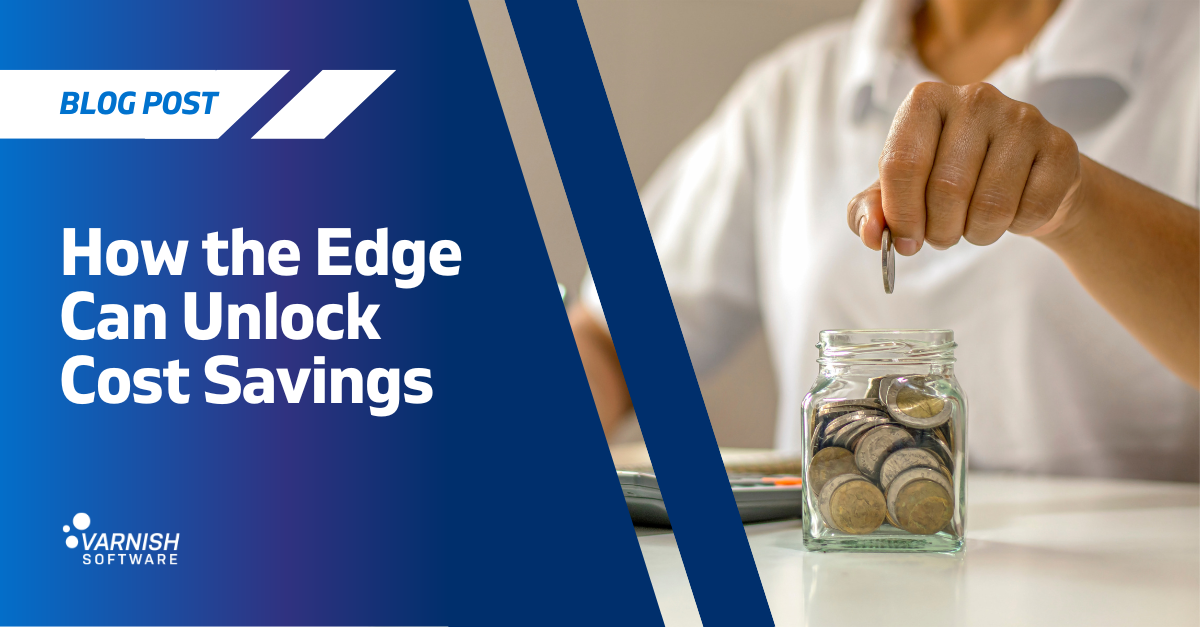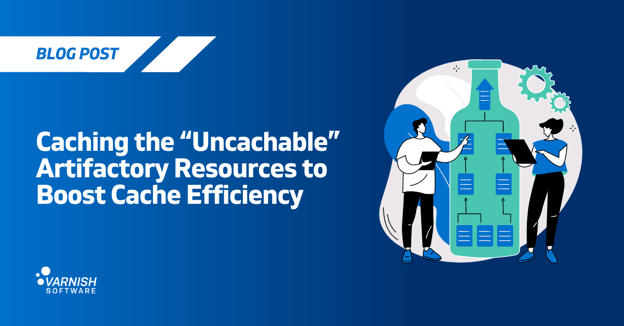“From an infrastructure provisioning point of view, if you can deliver the same or better demand with less infrastructure or investment, from fewer boxes on live streams, why wouldn’t you?” - RTÉ on Varnish
Business cycles and changing global economic conditions often require a reduction in operating costs. IT costs are often cut early on, even while the challenge of delivering exceptional service to visitors and viewers only increases. Infrastructure, bandwidth, security and cloud costs can squeeze margins and make it difficult to grow. Luckily, there are options available now for businesses to reduce ongoing web operations overheads without sacrificing customer experience.
Moving workloads to the network edge - closer to end-users and away from core web servers - brings multiple benefits, not least the opportunity to reduce costs while delivering a better service for audiences. Let’s explore the different ways the edge can unlock cost savings, without harming customer experience (and in some ways, even improving it.)
Origin Offload for More Efficient Delivery
Potential Cost Saving: 30% lower OPEX (CBC) 42% fewer servers needed (Nikon)
Offloading traffic and compute to an edge delivery layer - caching software such as Varnish Enterprise - can reduce costs in different ways. An extra caching layer here, also known as an origin shield, minimizes calls to backend servers by being a collection point for incoming uncached requests. From thousands of requests, only a few hit the backend, which brings stability, uptime, and better QoE, even as it lowers operating overheads. Cache misses also increase when different CDN PoPs need identical content at the same time, or cannot cache certain data types like POST requests. By catching these misses before they hit the origin, fewer backend resources are needed. The edge caching layer handles delivery, increasing cache-hit efficiency. An edge layer can also protect backend infrastructure from the impact of revalidating CDN nodes.
Reduce Cloud Egress Fees
Potential Cost Saving: 90% lower cloud bill
Using cloud origin services like AWS, Azure and GCP is a reliable way to deliver web content, but egress costs can become unsustainable as traffic increases. Take Nowcom, the leader in the automotive and financial services industries, for example. Egress from their cloud-hosted origin server cost over $6,000 a month, and their search for a solution brought them to Varnish. As a software-based edge caching layer that sits between cloud web services and end users, Varnish Enterprise maximizes cache hits to reduce egress while delivering web content faster. Using Varnish Enterprise, Nowcom’s cache hits increased to nearly 100%, reducing cloud costs by over 90%. They also managed to improve overall response times, eliminate storage issues and save over 100 hours a year on production issues, reducing overheads further.
Load Balancing to Prevent Over-Provisioning
Potential Cost Saving: 10x more traffic, no extra servers (RTÉ)
Traffic volatility can mean needing more computing resources than necessary to ensure capacity for traffic peaks. This leaves spare capacity and additional infrastructure unused for long periods of time - an overhead that represents a clear candidate for making efficiencies. Load balancing is one method for distributing workloads evenly, helping to avoid over-provisioning resources. As a layer between end-user and backend, the edge is an ideal position for which to direct traffic loads intelligently.
UDO is a Varnish Enterprise module that performs flexible load balancing at the edge, directing traffic to multiple backends based on customizable distribution logic. In addition, the Varnish Enterprise control plane and request router provides comprehensive management over client traffic and resource usage. Traffic Router sends clients to the best Varnish node, based on a flexible rules engine. Clients get the best user experience possible by being directed to the closest, least utilized cache. As Varnish user RTÉ explains, “We were not able to move traffic between PoPs or cities with previous solutions – it was always the closest PoP that gets hit.” After deploying a Varnish edge CDN, RTÉ found that while a previous workaround was adding more server hardware, “Traffic Router enables better use of existing servers and optimizing for efficiency.”
Limit Wasted Bandwidth
Potential Cost Saving: 30% lower infrastructure costs, depending on bot traffic levels
While increased traffic may seem like a good thing, a closer look reveals that an estimated 30% of traffic can be attributed to bots. While some bots are useful for search engines and digital assistants, other bots are malicious and used for data scraping, DDoS attacks and unauthorized web crawling. Bad bot traffic slows down websites, reducing conversation rates. It also creates unnecessary overheads, requiring more resources to handle the unnecessary traffic, particularly for on-premise servers which do not easily scale. Cloud services will scale automatically, but the more bot traffic, the higher the cloud bills.
Filtering out invalid traffic at the edge prevents wasted consumption of server resources and bandwidth while improving website performance. A good start is rate limiting, which can detect and prevent bot traffic. It offers a simple interface for throttling traffic on a per-key basis, with keys specified by things like IP, cookie values or API token.
Another effective method is to use the Varnish Enterprise and DeviceAtlas integration. DeviceAtlas is a commercial device detection database that contains extensive information on bots thanks to a global network of honeypots. Used alongside Varnish, DeviceAtlas can identify non-human traffic and direct them to a specific backend or block it entirely.
Another option is to block access from specific locations or restrict access to users in specific geographies, using geo-ip blocking tools. IP address blocking can also be achieved by using Access Control Lists, which can block a list or range of IP addresses. Finally, reverse DNS resolution lets you verify the identity of potentially legitimate web crawlers.
Edge-side Cost Reduction
These are just a few of the strategies available for using the edge to reduce overall costs for web operations. The key here is to combine the different methods to maximize the savings, whether it is more accurately provisioning hardware or blocking illegitimate traffic. A layer 7 software solution such as Varnish Enterprise contains the full range of features described above, making it easy to implement cost-cutting measures with a single platform-agnostic tool that slots right into existing web services.
Get in touch for guidance on calculating potential savings by deploying caching software at the edge.
/VS-logo-2020-197x60.png?width=136&height=60&name=VS-logo-2020-197x60.png)




